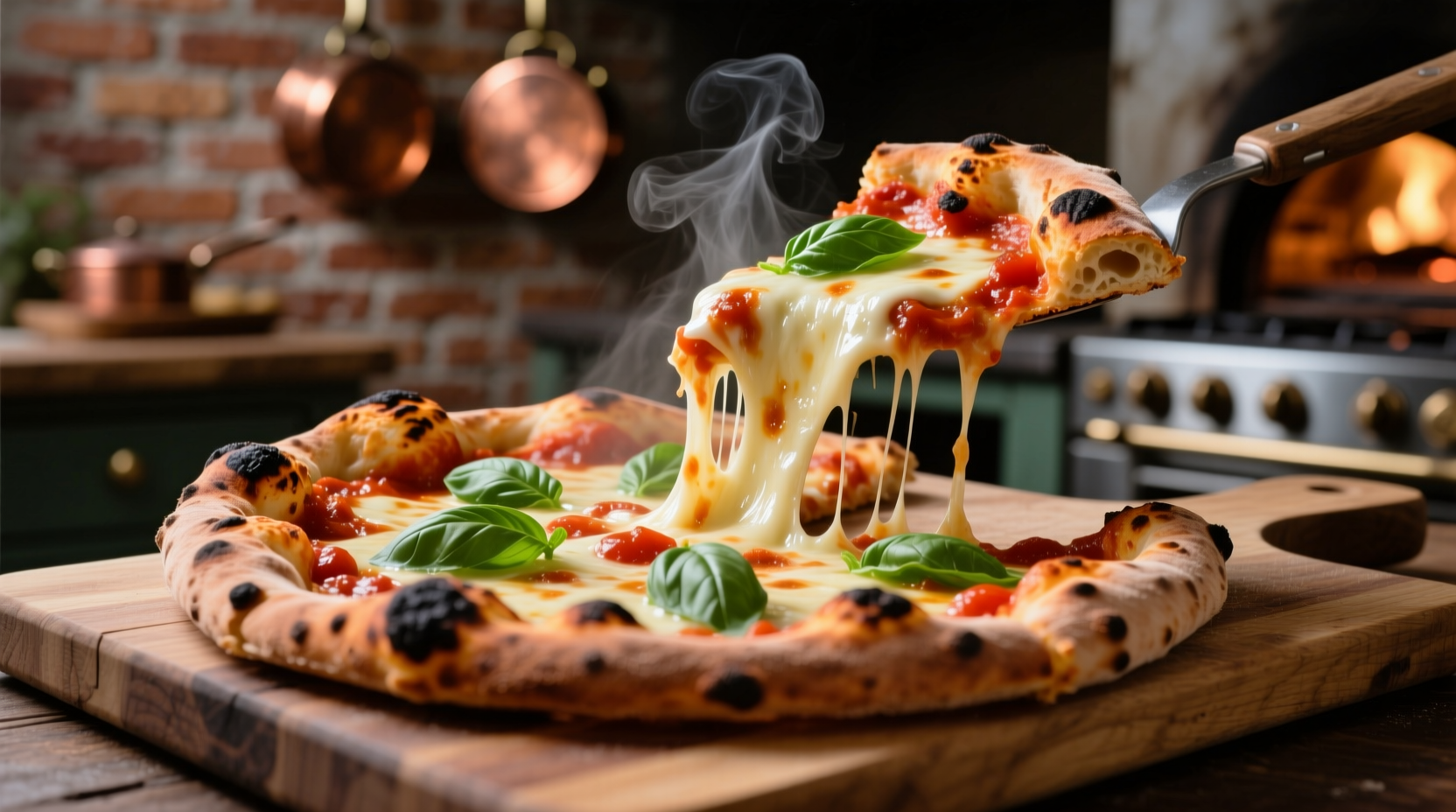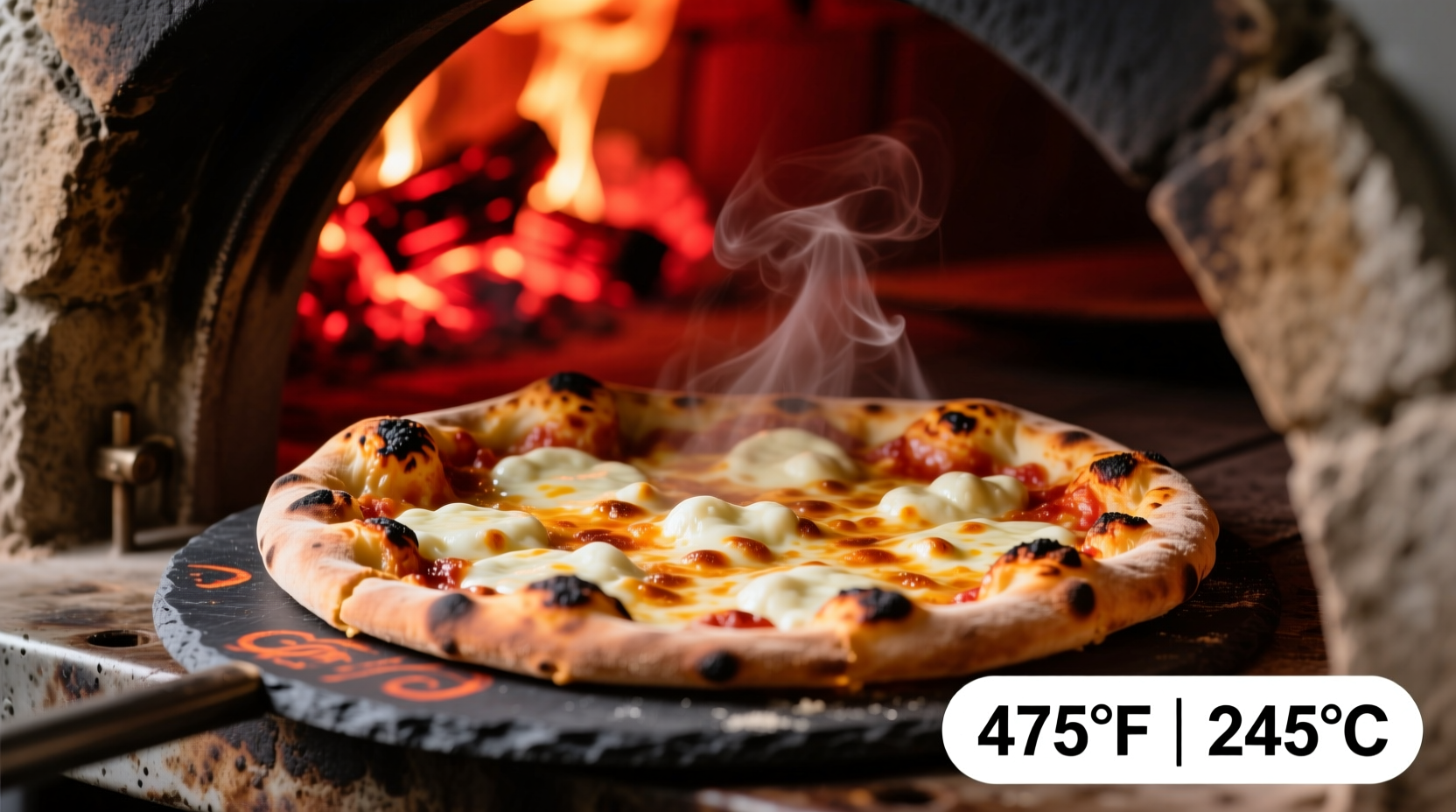The ideal temperature for cooking homemade pizza in a standard home oven is between 450°F and 500°F (230°C to 260°C). For best results, preheat your oven for at least 45 minutes with a pizza stone or steel inside to achieve proper heat retention and distribution, creating that perfect crispy-yet-chewy crust professionals achieve.
Why Temperature Matters for Perfect Homemade Pizza
Getting the temperature right is the single most crucial factor in transforming your homemade pizza from mediocre to magnificent. Unlike many baked goods, pizza requires intense heat to properly set the crust while melting cheese and cooking toppings without creating a soggy mess. When your oven hits that sweet spot between 450°F and 500°F, you'll achieve the perfect balance of a crisp, blistered crust with a tender interior, properly melted cheese, and cooked toppings.
Food science explains why high heat is essential: the intense temperature creates what culinary professionals call "oven spring" - that rapid initial rise that gives pizza its characteristic airy structure. According to research from the Baking Science Department at Kansas State University, temperatures below 400°F fail to activate the necessary Maillard reaction for proper browning and flavor development in pizza crusts.
Temperature Guidelines by Oven Type
Not all ovens perform the same, and your equipment significantly impacts the ideal cooking temperature. Here's how to adjust based on what you're working with:
| Oven Type | Recommended Temperature | Preheat Time | Special Considerations |
|---|---|---|---|
| Standard Electric | 450-475°F (230-245°C) | 45-60 minutes | Use convection setting if available; place stone on lowest rack position |
| Gas Oven | 475-500°F (245-260°C) | 40-50 minutes | Gas ovens often run hotter; verify with oven thermometer |
| Pizza Oven (Portable) | 750-900°F (400-480°C) | 15-20 minutes | Follow manufacturer's specific recommendations; cook in 60-90 seconds |
| Grill | 500-600°F (260-315°C) | 20-30 minutes | Use two-zone cooking; indirect heat with pizza stone |
Adjusting Temperature for Different Pizza Styles
Your desired pizza style dramatically affects the ideal cooking temperature. Professional pizzerias often use different temperatures for different styles, and you should too:
Neapolitan-Style Pizza
Authentic Neapolitan pizza requires extremely high heat—traditionally cooked in wood-fired ovens at 800-900°F. At home, set your oven to its maximum temperature (usually 500-550°F) with a pizza stone or steel. The pizza should cook in 4-6 minutes, developing those characteristic leopard spotting blisters on the crust. The Associazione Verace Pizza Napoletana (AVPN), the official Neapolitan pizza certification body, specifies that proper cooking requires temperatures that create a 90-second cook time in professional ovens.
New York-Style Pizza
For that classic New York foldable slice with a slightly chewy crust, aim for 475-500°F. This style benefits from slightly lower temperatures than Neapolitan, allowing the thicker crust to cook through without burning. New York pizzerias typically use deck ovens running at 550°F, but home ovens can't safely reach those temperatures, so 500°F is your target.
Deep Dish Pizza
Deep dish requires a completely different approach—start at 425°F for 15 minutes, then reduce to 375°F for another 20-25 minutes. The lower initial temperature prevents the cheese and toppings from burning before the thick crust cooks through. This two-stage method, recommended by Chicago's famous deep dish establishments, ensures fully cooked dough without overdone toppings.

Professional Techniques for Temperature Success
Temperature alone won't guarantee perfect pizza—how you manage that heat makes all the difference. Here are techniques I've learned from years working in professional kitchens that translate perfectly to home cooking:
Proper Preheating is Non-Negotiable
Most home cooks drastically underestimate preheating time. Your oven might indicate it's reached temperature in 10-15 minutes, but the thermal mass of your pizza stone or steel needs much longer to absorb sufficient heat. For a standard 1¼ inch thick pizza stone, allow 45-60 minutes of preheating. This ensures enough stored heat to properly cook the bottom of your pizza—the most challenging part in home ovens.
Pizza Steel vs. Stone: Which Performs Better?
Research from Modernist Cuisine shows that pizza steels outperform stones in heat transfer efficiency. A 1/4 inch steel plate can deliver up to 2.8 times more heat to the pizza base than a ceramic stone of equivalent thickness. This means faster cooking times and better oven spring. If using a steel, you can often reduce cooking time by 1-2 minutes compared to stone.
The Window Method for Checking Doneness
Instead of opening the oven door (which can drop the temperature by 50°F or more), use your oven light and look through the window. Properly cooked pizza shows these visual cues:
- Crust edges are golden brown with some dark spotting
- Cheese is fully melted with some browning spots
- Bottom crust releases easily from the stone/steel (check with peel)
Troubleshooting Common Temperature Problems
Even with the right temperature setting, issues can arise. Here's how to diagnose and fix common problems:
Soggy or Doughy Crust
Problem: Crust doesn't crisp properly, feels wet or doughy. Solution: Increase oven temperature by 25°F and ensure proper preheating time. Reduce sauce and cheese quantity slightly. Consider using a perforated pizza pan for better air circulation. According to the American Institute of Baking, moisture content in the 50-55% range creates optimal crust texture—too much topping moisture pushes this higher.
Burnt Toppings, Raw Crust
Problem: Toppings burn before crust cooks through. Solution: Position oven rack in the lower third of the oven and start with a slightly lower temperature (425°F), increasing to 475°F after 5 minutes. Precook watery vegetables like mushrooms or zucchini to remove excess moisture. Use the broiler for the final minute to finish melting cheese without overcooking crust.
Uneven Cooking
Problem: One side cooks faster than the other. Solution: Rotate pizza 180 degrees halfway through cooking. Verify your oven temperature with an independent oven thermometer—many home ovens have hot spots or inaccurate thermostats. The National Institute of Standards and Technology reports that up to 40% of home ovens have temperature variations exceeding 25°F.
Advanced Temperature Techniques for Serious Home Chefs
Once you've mastered the basics, these advanced methods will take your pizza to the next level:
The Reverse Sear Method
Start with the pizza on the lowest oven rack at 425°F for 3 minutes to set the bottom crust, then move to the upper rack at 500°F for 2-3 minutes to finish the top. This mimics the effect of a professional pizza oven's intense bottom heat.
Temperature Layering with Multiple Racks
For cooking multiple pizzas, place one stone on the lowest rack and another on the middle rack. The bottom stone will run slightly hotter, perfect for thicker crusts, while the middle stone maintains optimal temperature for standard pizzas. Rotate positions halfway through preheating for more even heat distribution.











 浙公网安备
33010002000092号
浙公网安备
33010002000092号 浙B2-20120091-4
浙B2-20120091-4